Disclosure: We may earn commissions if you purchase products after clicking on a link from our site.
If you’ve ever wondered about the intricate dance between hunters and deer during Ohio’s hunting season, you’re in for a treat. There’s a whole world to explore from bag limits to safety regulations. Are you ready to discover the ins and outs of deer hunting in Ohio and how it all ties together for a successful season?
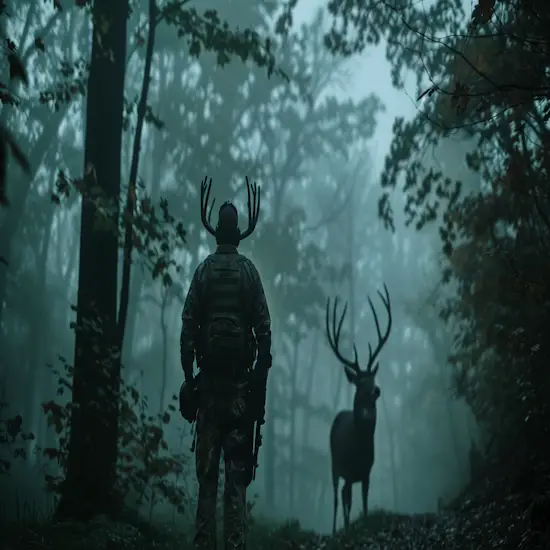
Table of Contents
- 1 Key Takeaways
- 2 Bag Limits
- 3 Antler Restrictions
- 4 Hunting Seasons
- 5 DSA Deer Hunting
- 6 Hunting Hours
- 7 Licenses & Permits
- 8 Hunter Education
- 9 Weapon Restrictions
- 10 Public Land Regulations
- 11 Private Land Regulations
- 12 Reporting Requirements
- 13 Chronic Wasting Disease (CWD)
- 14 Disease Surveillance Area (DSA)
- 15 Safety Regulations
- 16 The Bottom Line
Key Takeaways
- Ohio offers deer archery season from late September to early February.
- Youth Deer Gun season provides safe hunting opportunities for young hunters.
- Deer Gun season in Ohio typically runs from early November to late December.
- Check regulations for hunting hours, equipment, and tagging requirements.
- Obtain necessary permits and licenses before participating in deer hunting seasons.

Bag Limits
You need to know the bag limits for deer hunting in Ohio. Depending on the county you’re hunting in, there are different limits – two deer in some counties, three in others, and four in a few. Ensure you know the specific regulations for the county you plan to hunt in to stay within the legal limits.
Two Deer County
In Ohio, certain counties have a bag limit of two deer for hunters to adhere to during the hunting season. This means that when hunting in these specific counties, you’re allowed to harvest up to two deer within the designated time frame. It’s important to be aware of and follow this regulation to help maintain a sustainable deer population in those areas.
Make sure you’re familiar with the specific counties that have the two deer bag limit. Keep track of the number of deer you have harvested to avoid exceeding the limit. Report your harvest accurately and promptly to comply with hunting regulations.
Three Deer County
Certain Ohio counties have a bag limit of three deer for hunters to adhere to during the hunting season. This means that within these counties, hunters are allowed to harvest up to three deer per season. It is important to always check the specific regulations for the county you plan to hunt in to guarantee compliance with the bag limits.
Below is a breakdown of some of the counties in Ohio that have a bag limit of three deer:
| County | Bag Limit | Notes |
|---|---|---|
| Adams | 3 | Only one antlerless deer permitted. |
| Brown | 3 | No more than one antlered deer allowed. |
| Highland | 3 | Bag limit includes both antlered and antlerless deer. |
Four Deer County
Hunters in certain Ohio counties with a bag limit of four deer can harvest up to four deer per season, subject to specific regulations. When hunting in a ‘Four Deer County’, it’s crucial to understand the rules to guarantee compliance and sustainable deer management.
- Follow the county-specific regulations to determine if you’re in a ‘Four Deer County’.
- Keep track of the number of deer harvested to avoid exceeding the bag limit.
- Familiarize yourself with the reporting requirements for harvested deer in these counties.

Antler Restrictions
You need to grasp the antler size requirements, how they impact the deer population, and the rates of hunter compliance. Antler restrictions play a vital role in managing deer populations and ensuring sustainable hunting practices.
Antler Size Requirements
Antler size regulations in Ohio are implemented to manage deer populations effectively. These regulations help guarantee the health and balance of the deer population, as well as maintain the quality of the hunting experience for hunters like yourself.
- Minimum Antler Spread: Ohio requires bucks to have a minimum antler spread to be eligible for harvest. This helps in fostering the growth of larger, healthier bucks.
- Antler Point Restrictions: Some areas in Ohio have restrictions on the number of points a buck must have on one side to be harvested. This rule aims to safeguard younger bucks, allowing them to grow and contribute to the overall genetics of the deer population.
- Antlerless Deer Harvest: In certain zones, antlerless deer can be harvested regardless of antler size. This regulation is in place to manage the deer population effectively, especially in areas where deer numbers need to be controlled.
Impact on Deer Population
Implementing antler restrictions in hunting areas has significant effects on the overall deer population dynamics in Ohio. By setting limits on the size of antlers that can be harvested, wildlife management aims to improve the age structure and genetic diversity of the deer population.
Antler restrictions often target bucks with a specific number of points or minimum antler width, allowing younger bucks to mature and contribute to the gene pool. This helps in maintaining a balanced deer population with healthier genetics.
Antler restrictions also play a role in controlling the deer population size. By allowing more young bucks to survive and grow, hunters are encouraged to target older, often larger, bucks. This selective harvesting can help in managing deer numbers more effectively while also improving the overall health and behavior of the deer population.
Hunter Compliance Rates
Guarantee hunters adhere to antler restrictions to support wildlife management goals in Ohio. By following these guidelines, you contribute to maintaining a healthy deer population and a balanced ecosystem.
- Antler Restrictions: Help in managing the deer population by targeting specific age groups for harvest.
- Wildlife Conservation: Safeguards the sustainability of deer populations for future generations to enjoy.
- Ecosystem Balance: Preserves the natural balance between deer, their habitat, and other wildlife species.
When hunters abide by antler restrictions, they play an essential role in promoting the overall health of the deer population. These restrictions are in place to protect young bucks, allowing them to mature and contribute to the genetic diversity of the herd.

Hunting Seasons
You’ll find different seasons like Deer Archery, Youth Deer Gun, Deer Gun, and Deer Muzzleloader. Knowing the specific seasons can help you plan your hunting trips accordingly.
Deer Archery
You can find the deer archery hunting seasons in Ohio by referring to the official hunting regulations guide provided by the Ohio Department of Natural Resources.
In Ohio, deer archery season typically runs from late September to early February, offering hunters an extended opportunity to pursue deer with archery equipment.
During this season, you should familiarize yourself with the specific regulations and requirements to guarantee a safe and successful hunting experience.
- Regulations: Check the hunting regulations guide for details on hunting hours, approved equipment, tagging requirements, and any specific rules pertaining to deer archery season.
- Permits: Make sure you have the appropriate hunting license and deer permits required for archery hunting in Ohio.
- Safety: Always prioritize safety by following proper archery practices, wearing hunter orange, and being aware of your surroundings while in the field.
Youth Deer Gun
To guarantee the hunting seasons for Youth Deer Gun in Ohio, refer to the official hunting regulations guide provided by the Ohio Department of Natural Resources. This guide will give you all the information you need to know about when the Youth Deer Gun season starts and ends, as well as any specific regulations or restrictions that apply during this season.
Youth Deer Gun season is a great opportunity for young hunters to experience the excitement of deer hunting in Ohio. It provides a chance for youth hunters to develop their skills and enjoy the outdoors in a safe and controlled environment.
Before heading out for the Youth Deer Gun season, make sure you have all the necessary licenses and permits required by the state. It’s important to follow all the rules and regulations set forth by the Ohio Department of Natural Resources to secure a safe and successful hunting experience.
Deer Gun
The Deer Gun hunting season in Ohio typically runs from early November to late December. During this time, hunters like you have the opportunity to pursue deer using firearms.
Here are a few key points to keep in mind for the Deer Gun season:
- Firearm Restrictions: Make sure you’re using a firearm that complies with Ohio’s regulations for hunting deer. Check that your firearm meets the legal specifications for caliber, action type, and magazine capacity.
- Safety Precautions: Always prioritize safety when hunting with a firearm. Remember to handle your gun responsibly, wear appropriate safety gear, and be aware of your surroundings at all times.
- Hunting Techniques: Develop your skills in marksmanship and tracking to increase your chances of a successful hunt. Practice shooting from different positions and distances to be prepared for various scenarios in the field.
Deer Muzzleloader
During the Deer Muzzleloader hunting season in Ohio, it’s important to confirm that you’re permitted to pursue deer using muzzleloading firearms. This season provides a unique opportunity for hunters who enjoy the challenge and tradition of using these historical firearms. The Deer Muzzleloader season typically occurs after the Deer Gun season and offers a different experience in the pursuit of deer.
When participating in the Deer Muzzleloader season, it’s vital to make sure that you’re using a muzzleloading firearm that complies with Ohio’s regulations. Take the time to familiarize yourself with the specific rules and requirements for this season to avoid any potential issues while hunting.
Keep in mind that the Deer Muzzleloader season has its own set of dates and bag limits, distinct from other deer hunting seasons in Ohio. Be sure to check the official regulations to stay informed about when the season begins and ends, as well as any limitations on the number of deer you can harvest.
Enjoy the challenge and excitement of hunting deer with a muzzleloader during this special season.

DSA Deer Hunting
If you’re looking to participate in DSA Deer Hunting in Ohio, you’ll want to know about DSA Deer Archery and DSA Early Deer Gun seasons. These specific hunting seasons offer opportunities for hunters to pursue deer using archery equipment or firearms during designated times.
Make sure to check the regulations and dates for each of these DSA Deer Hunting seasons before heading out into the field.
DSA Deer Archery
In Ohio, when participating in DSA Deer Archery, always make sure you have the necessary licenses and permits. This is important to guarantee you’re hunting legally and ethically. Make sure to check the specific regulations for DSA Deer Archery in Ohio to avoid any penalties.
Practice Your Archery Skills:
Before heading out for DSA Deer Archery, spend some time practicing your archery skills to ensure accuracy and precision in your shots.
Scout the Hunting Area:
It’s vital to scout the hunting area beforehand to familiarize yourself with the terrain and identify potential deer trails and feeding areas.
Use Proper Safety Equipment:
When engaging in DSA Deer Archery, always prioritize safety. Make sure to wear appropriate safety gear, such as a harness when hunting from an elevated position.
DSA Early Deer Gun
When participating in DSA Early Deer Gun (DSA Deer Hunting) in Ohio, make sure you possess the required licenses and permits for legal hunting. The DSA Early Deer Gun season typically occurs before the regular deer gun season and provides hunters with an opportunity to pursue deer using firearms. It’s important to familiarize yourself with the specific dates of the DSA Early Deer Gun season, as well as any location restrictions that may apply.
During the DSA Early Deer Gun season, hunters must adhere to all Ohio hunting regulations, including bag limits and weapon restrictions. It’s vital to prioritize safety while hunting and follow ethical practices to ensure a sustainable deer population for future seasons.
Additionally, hunters should be aware of any updates or changes to the hunting regulations that may affect their participation in the DSA Early Deer Gun season.
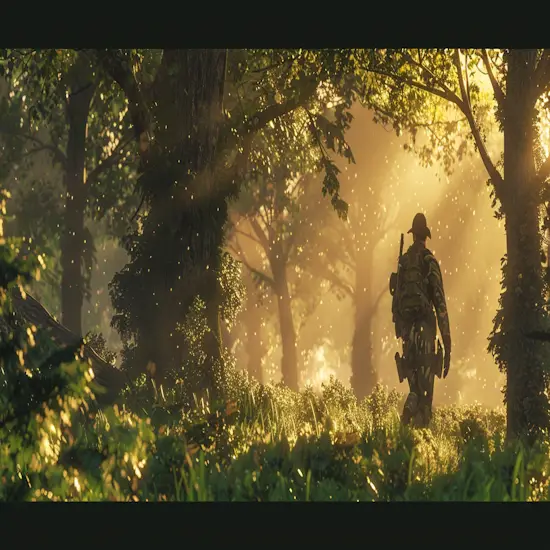
Hunting Hours
During deer hunting season in Ohio, you must follow specific hunting hours as outlined by the regulations. It’s essential to be aware of these designated times to guarantee safety and compliance with the law.
- Hunting hours typically begin half an hour before sunrise.
- The hunting day usually ends around half an hour after sunset.
- It’s important to check the exact times for each specific day, as they may vary slightly throughout the season.

Licenses & Permits
Before you head out for deer hunting season in Ohio, it’s important to understand the different license requirements.
Make sure to purchase a hunting license to comply with state regulations. You can opt for electronic licenses, obtain duplicates if needed, or explore exemptions that may apply to your situation.
License Requirements
To hunt deer in Ohio, you’re required to have the appropriate licenses and permits. Acquiring the necessary paperwork guarantees you’re compliant with state regulations and can enjoy a successful hunting experience.
Here are the key license requirements to keep in mind:
- Resident Hunting License: Ohio residents need to purchase a resident hunting license to hunt deer legally.
- Deer Permit: In addition to the hunting license, a deer permit is required for hunting deer in Ohio. This permit specifies the number of deer you’re allowed to harvest.
- Youth Hunting License: For young hunters under a certain age, a youth hunting license is necessary. This license often comes with specific regulations tailored to youth hunters.
Purchase A Hunting License
To legally hunt in Ohio, you must first purchase the required hunting license and permit. Whether you’re a resident or non-resident hunter, obtaining a hunting license is necessary before heading out to hunt deer in the state. The Ohio Department of Natural Resources offers various types of licenses, including youth licenses for younger hunters. Licenses can typically be purchased online through the wildlife agency’s website, at authorized license agents, or at select department offices.
When purchasing your hunting license, you may also need to take into account additional permits depending on the type of hunting you plan to do. For deer hunting, specific permits may be required, such as a deer permit or a deer archery permit. These permits help regulate hunting activities and ensure the conservation of Ohio’s deer population.
Make sure to familiarize yourself with the current hunting regulations and license requirements before purchasing your hunting license. This guarantees you’re compliant with Ohio’s hunting laws and can enjoy a safe and successful hunting season.
Electronic Licenses
You can now conveniently obtain your hunting licenses and permits electronically in Ohio. Gone are the days of waiting in line or dealing with paper forms. With the electronic system, you have quick access to all the necessary documentation right at your fingertips.
- Easy Process: Simply visit the Ohio Department of Natural Resources website and follow the steps to purchase your hunting license or permit online. It’s a straightforward process that saves you time and hassle.
- Immediate Access: Once you complete your electronic purchase, your license or permit is available for immediate use. No more waiting for it to arrive in the mail or driving to a physical location to pick it up.
- Convenient Renewals: When it’s time to renew your license or permit, you can do so online with just a few clicks. It’s a convenient way to make sure you’re always ready for hunting season.
Duplicate Licenses & Permits
If you find yourself in need of a duplicate hunting license or permit in Ohio, there’s a simple process in place to address this situation efficiently. To obtain a duplicate, visit the Ohio Division of Wildlife’s website or any approved license vendor. You’ll need to provide your identification details and pay a fee for the duplicate license or permit. Once processed, you’ll receive a duplicate that can be used immediately for hunting activities.
It’s important to carry your duplicate license or permit with you while hunting to avoid any legal issues. Having a duplicate guarantees that you’re compliant with Ohio’s hunting regulations and can enjoy your hunting experience without any interruptions.
Remember to store your original license or permit in a safe place to prevent further loss or damage. By following these steps, you can quickly replace a lost or damaged license and continue enjoying your hunting adventures in Ohio.
License Exemptions
Certain individuals in Ohio are exempt from the requirement of obtaining hunting licenses or permits. These exemptions are put in place to accommodate specific groups who contribute to the conservation and preservation of wildlife in the state. If you fall into one of the following categories, you may not need a hunting license or permit:
- Landowners: If you own or are a tenant of agricultural land, you may be exempt from needing a hunting license while hunting on your property.
- Youth: Individuals under a certain age, typically 17 years old or younger, may be exempt from hunting license requirements.
- Active Duty Military and Veterans: Those who are currently serving in the military or have previously served may be eligible for hunting license exemptions as a token of appreciation for their service.
These exemptions aim to make hunting more accessible to certain groups while maintaining the necessary regulations for wildlife management and conservation.
Free Hunting License Eligibility
Landowners and youth in Ohio may be eligible for a free hunting license under specific circumstances. If you own at least 40 acres of land in Ohio, you could qualify for a free hunting license. This is a great opportunity for landowners who want to hunt on their own property without having to purchase a license.
Additionally, youth hunters under the age of 18 can also apply for a free hunting license in Ohio. This is a fantastic way to encourage young individuals to get involved in hunting and outdoor activities.
To apply for a free hunting license as a landowner or youth in Ohio, make sure to check the specific eligibility requirements set by the Ohio Department of Natural Resources.
Apprentice License Program
Explore the Apprentice License Program for obtaining hunting licenses and permits in Ohio. If you’re new to hunting or want to try it out before committing to a full license, the Apprentice License Program is a great option.
Here’s what you need to know:
- Eligibility: The program is open to individuals 21 years and older who haven’t completed a hunter education course. It allows you to hunt under the supervision of a licensed adult hunter.
- Duration: An apprentice hunter can participate in the program for up to three license years before being required to complete a hunter education course.
- Restrictions: While hunting under the Apprentice License, you must be accompanied by a licensed hunter who’s 21 years or older and has completed a hunter education course. The licensed hunter can only supervise up to two apprentice hunters at a time.
Consider the Apprentice License Program as a stepping stone to full licensure, providing a safe and educational way to experience the thrill of hunting in Ohio.
Interstate Wildlife Violator Compact
Under the Interstate Wildlife Violator Compact, you must follow certain rules when getting licenses and permits. This agreement allows states to share information about wildlife violations across state lines. If you violate hunting laws in one state, it could impact your hunting privileges in another.
When applying for licenses and permits, make sure you provide accurate information and comply with all regulations. Any violations could lead to penalties or even a suspension of your hunting privileges in multiple states. It’s important to stay informed about the specific requirements in each state you plan to hunt in to avoid any issues.
The Ohio Conservation Card
When obtaining licenses and permits for hunting in Ohio, it’s important to familiarize yourself with the Ohio Conservation Card. This card serves as a convenient way to show proof of hunting licenses and permits while also supporting conservation efforts across the state.
Convenient Access: The Ohio Conservation Card is a digital platform that allows hunters to access their licenses and permits electronically, making it easy to carry and present during hunting activities.
Supporting Conservation: By purchasing the Ohio Conservation Card, hunters are contributing directly to conservation programs and initiatives that help protect Ohio’s wildlife and natural habitats.
Versatile Usage: The Ohio Conservation Card can be used for various hunting activities, including deer hunting, turkey hunting, and waterfowl hunting, providing a comprehensive solution for all your hunting license and permit needs.
Make sure to acquire your Ohio Conservation Card before heading out for your next hunting adventure to stay compliant with regulations and support conservation efforts in Ohio.
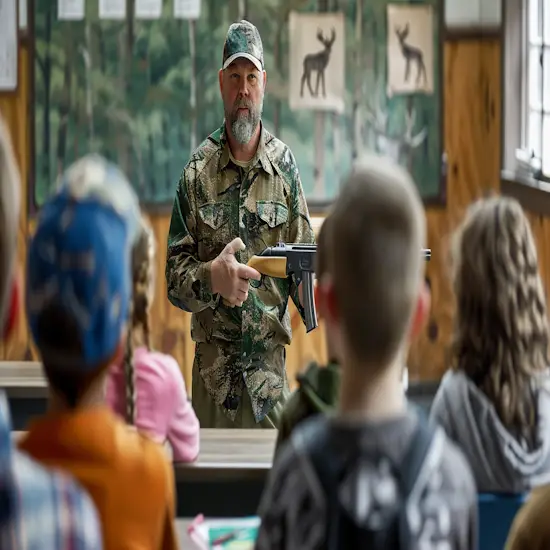
Hunter Education
You should know that Hunter Education in Ohio offers Instructor-Led Training, Home-Study Courses for residents, and Online Testing for those aged 12 and older.
These options provide you with the necessary knowledge and skills to guarantee safe and responsible hunting practices.
Make sure to take advantage of these resources to enhance your hunting experience and contribute to conservation efforts.
Instructor-Led Training
Participating in instructor-led training for hunter education is vital for acquiring the necessary knowledge and skills to guarantee safe and responsible hunting practices. During these training sessions, you’ll learn about various aspects of hunting, including firearm safety, wildlife conservation, and hunting laws.
Here’s why instructor-led training is essential:
- Interactive Learning: Engaging with experienced instructors and fellow hunters allows for interactive learning sessions where you can ask questions, participate in discussions, and receive immediate feedback.
- Hands-On Experience: Instructor-led training often includes hands-on activities such as firearm handling demonstrations, target practice, and field exercises, providing you with practical experience in a controlled environment.
- Certification: Completing instructor-led training usually results in a hunter education certificate, which is often a legal requirement for obtaining a hunting license and demonstrates your commitment to safe and ethical hunting practices.
Home-Study Courses for Ohio Residents
Engaging in home-study courses is a convenient option for Ohio residents seeking hunter education. These courses allow you to learn at your own pace and from the comfort of your own home. To begin, you can obtain the home-study materials either online or from a local vendor. The materials cover essential topics such as firearm safety, wildlife conservation, and hunting regulations specific to Ohio.
Once you have studied the materials thoroughly, you can take the Hunter Education Exam. This exam evaluates your understanding of the material and confirms you’re ready to hunt safely and responsibly.
After passing the exam, you’ll receive your Hunter Education Certificate, which is required to purchase a hunting license in Ohio.
Online Testing for Residents 12 and Older
Residents aged 12 and older in Ohio can complete their Hunter Education Exam through online testing. This convenient option allows you to study at your own pace and take the exam from the comfort of your home.
To access the online testing for Hunter Education, follow these steps:
- Visit the Ohio Department of Natural Resources website.
- Look for the Hunter Education section.
- Click on the online testing option and follow the instructions to begin your exam.
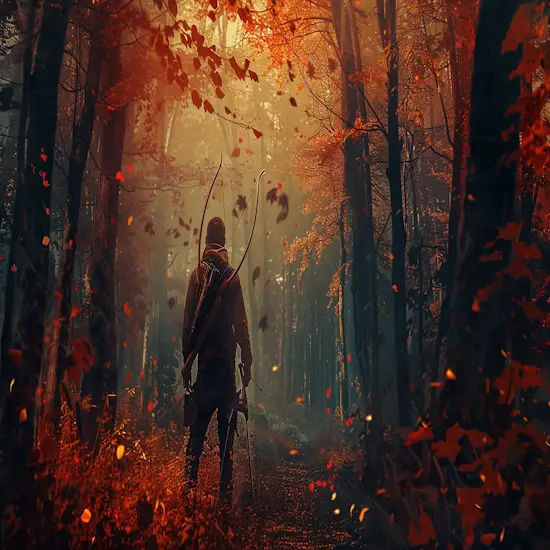
Weapon Restrictions
Now let’s talk about the weapon restrictions you should be aware of during deer hunting season in Ohio. You’ll need to know the rules for archery season, gun season, and muzzleloader season. Understanding these restrictions is vital for a safe and successful hunting experience.
Archery Season
You can use a longbow or bow during archery season for deer hunting in Ohio. Crossbows are also allowed as a weapon choice for this season.
Make sure to check the specific regulations and restrictions related to archery season before heading out for your hunt.
Longbow or Bow
During archery season in Ohio, hunters are permitted to use longbows or bows as their weapon of choice. Longbows require more skill and practice for accuracy. Bows come in different draw weights to suit various hunters. Both longbows and bows offer a traditional hunting experience close to the animal.
Crossbow
When it comes to the Archery Season in Ohio, hunters may also opt to use a crossbow as their weapon of choice. Crossbows have become increasingly popular due to their ease of use and accuracy.
Unlike traditional bows, crossbows are held horizontally, making it easier for hunters to aim and shoot accurately. However, it’s important to note that crossbows are subject to specific regulations during the Archery Season in Ohio.
Gun Season
You can use a variety of firearms during the gun season for deer hunting in Ohio. These include shotguns, straight-walled cartridge rifles, muzzleloading rifles, and muzzleloading shotguns. Additionally, archery equipment is also permitted for hunting during this season.
Shotgun
For gun season in Ohio, shotguns have specific weapon restrictions that hunters must adhere to.
- Only 10, 12, 16, or 20 gauge shotguns are allowed.
- Slugs or buckshot must be used; no birdshot permitted.
- Shotgun barrels must be at least 20 inches long.
Stright-Walled Cartridge Rifles
In Ohio’s gun season, you can use straight-walled cartridge rifles that adhere to weapon restrictions. These rifles must have a minimum caliber of .357 and a maximum caliber of .50. The cartridge case length should fall between 1.16 and 1.8 inches.
Additionally, the rifle must have a straight-walled cartridge, which means the case expands at the base. Make sure your rifle meets these requirements before heading out to hunt deer.
Archery Equipment
During Ohio’s gun season, only archery equipment with specific weapon restrictions is permitted for hunting deer. When using archery equipment, remember the following:
- Crossbows must have a minimum draw weight of 75 pounds.
- Arrows need to be equipped with broadheads at least 7/8 inches wide.
- Mechanical broadheads are allowed, but they must have at least two cutting edges.
Muzzleloading Rifle
Verify that your muzzleloading rifle is compliant with the specific weapon restrictions during Ohio’s gun season for deer hunting.
Only muzzleloading rifles of .38 caliber or larger are allowed, and they must be fired from the shoulder. Additionally, the rifle must have a flint or percussion ignition system.
Be sure to review all the weapon restrictions in place to make certain you’re using an approved muzzleloading rifle during gun season.
Muzzleloading Shotgun
To guarantee compliance with Ohio’s gun season restrictions, make certain your muzzleloading shotgun meets the specific weapon requirements before heading out for deer hunting.
- Check that your muzzleloading shotgun is .38 caliber or larger.
- Confirm it’s loaded from the muzzle.
- Make sure it’s equipped with only a single barrel.
Handgun
Make sure your handgun for deer hunting during gun season adheres to Ohio’s specific weapon restrictions. Only straight-walled cartridge rifles are permitted, with a minimum caliber of .357 and a maximum caliber of .50.
Your handgun must also have a minimum barrel length of 5 inches. Be aware that full metal jacketed bullets aren’t allowed for hunting deer in Ohio during gun season.
Muzzleloader Season
What are the weapon restrictions for muzzleloader season in Ohio?
During muzzleloader season in Ohio, there are specific weapon restrictions in place to guarantee fair and safe hunting practices. Here’s what you need to know:
- Muzzleloader Type: Only muzzleloading rifles are allowed during muzzleloader season. No other type of firearm is permitted for hunting deer during this season.
- Ignition Type: The muzzleloading rifles used must have a manual ignition system. This means that firearms with electronic or other non-manual ignition systems aren’t allowed.
- Projectile Type: Hunters are only allowed to use a single projectile in their muzzleloading rifle. Multiple projectiles or shots are prohibited during muzzleloader season.
Make sure to familiarize yourself with these weapon restrictions before heading out for muzzleloader season in Ohio to ensure compliance with the regulations and to have a successful hunting experience.

Public Land Regulations
When hunting on public lands in Ohio, it’s important to be aware of specific regulations that apply to State Parks, Wildlife Management Areas, and National Forests. These areas may have unique rules regarding hunting seasons, bag limits, and weapon restrictions that hunters must adhere to.
Familiarizing yourself with the regulations for each public land you plan to hunt on will guarantee a safe and legal hunting experience.
State Parks
Explore the regulations for hunting on public lands, specifically State Parks, in Ohio. When hunting in State Parks, it’s important to be aware of the specific rules and guidelines in place to guarantee a safe and enjoyable experience.
- Permits: Before heading out to hunt in State Parks in Ohio, make sure to obtain the necessary permits required for hunting on public lands. These permits can usually be purchased online or at designated locations.
- Hunting Seasons: Familiarize yourself with the hunting seasons for deer, turkey, and other game in State Parks. It’s crucial to hunt only during the designated seasons to comply with regulations and conservation efforts.
- Firearm Restrictions: Be mindful of any firearm restrictions that may apply in State Parks. Some areas may have specific rules regarding the types of firearms allowed for hunting.
Wildlife Management Areas
To hunt in Wildlife Management Areas in Ohio, make sure you comply with the specific regulations governing public land hunting activities. These areas are carefully managed to guarantee sustainable wildlife populations and a safe environment for hunters.
Before heading out, familiarize yourself with the rules set forth by the Ohio Department of Natural Resources (ODNR). It’s important to know the designated hunting seasons, bag limits, and any special restrictions that may apply to the specific Wildlife Management Area you plan to visit.
When hunting in these areas, always carry your valid hunting license and any required permits. Respect the boundaries of the Wildlife Management Area and follow all signage regarding hunting zones and access rules.
Be mindful of other hunters and wildlife enthusiasts sharing the space with you. Remember to practice ethical hunting, including proper disposal of waste and adherence to wildlife conservation guidelines.
National Forests
Adhere to Ohio’s regulations when hunting in National Forests by familiarizing yourself with the specific rules and restrictions set forth by the Ohio Department of Natural Resources (ODNR).
When hunting in National Forests in Ohio, it’s essential to follow these guidelines:
- Obtain the necessary permits and licenses before heading out to hunt.
- Respect the designated hunting seasons for deer, turkey, and waterfowl as outlined by ODNR.
- Adhere to bag limits and other regulations to guarantee the sustainability of wildlife populations in the National Forests.

Private Land Regulations
When hunting on private land in Ohio, you need to be aware of permission requirements, hunting leases, and land use agreements.
These regulations are essential for ensuring a safe and legal hunting experience on private properties. Understanding and following these guidelines will help you have a successful and enjoyable hunting season.
Permission Requirements
Make sure you understand the permission requirements for hunting on private land in Ohio. When hunting on private property in Ohio, it’s crucial to follow specific rules to guarantee a safe and legal hunting experience.
- Obtain written permission from the landowner before hunting on their property.
- Respect any rules or restrictions set by the landowner regarding hunting practices and areas.
- Be mindful of property boundaries and avoid trespassing on neighboring lands.
Hunting Leases
To guarantee compliance with private land regulations for hunting in Ohio, understanding the guidelines for hunting leases is imperative. When entering into a hunting lease agreement, make sure to clearly outline the terms of the lease, including the duration of the lease, the specific areas where hunting is permitted, any restrictions on the type of hunting allowed, and any additional rules set by the landowner.
It’s essential to obtain written permission from the landowner before hunting on leased land to avoid any legal issues. Additionally, be sure to abide by all regulations set forth in the lease agreement, such as respecting property boundaries, adhering to hunting seasons and bag limits, and following all safety precautions.
Land Use Agreements
Adhere to compliance with private land regulations for hunting in Ohio by understanding the guidelines for land use agreements. When hunting on private land, it’s important to respect the landowner’s rules and regulations to maintain a positive relationship and guarantee a safe hunting experience.
Here are some essential points to keep in mind:
- Obtain written permission: Always secure written permission from the landowner before hunting on their property. This document outlines the specific terms and conditions of your hunting access.
- Follow designated hunting areas: Stick to the areas designated by the landowner for hunting activities. Respect any boundaries or restrictions they’ve set in place.
- Leave no trace: Practice good land stewardship by cleaning up after yourself, avoiding damage to property, and leaving the land in the same condition as you found it.
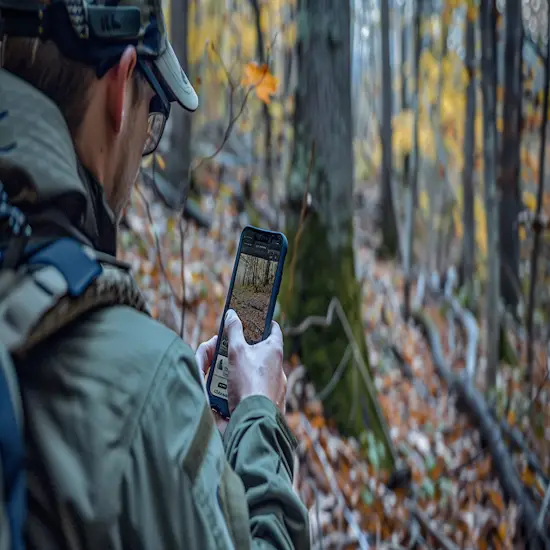
Reporting Requirements
You need to know about the reporting requirements for deer hunting in Ohio. Remember to tag and check your deer, utilize physical check stations, or use online reporting systems and phone hotlines to comply with regulations.
Reporting your harvest is essential for managing wildlife populations and ensuring the sustainability of hunting in Ohio.
Tag and Check
Make sure to report your deer harvest by tagging and checking it according to Ohio hunting regulations. When you harvest a deer during the hunting season, it’s important to follow the proper procedures to guarantee compliance with the law and contribute to wildlife management efforts.
- Tagging: Immediately upon harvesting a deer, you must fill out your game tag with the necessary information, including the date, time, and location of the kill. Attach the tag to the deer’s carcass before moving it from the harvest site.
- Checking: After tagging the deer, you must report your harvest to the Ohio Department of Natural Resources either online, by phone, or in person at a participating license agent. This step is essential for data collection and management purposes.
- Compliance: Failure to properly tag and report your deer harvest can result in penalties and fines. It’s your responsibility as a hunter to adhere to these regulations to support conservation efforts and ensure the sustainability of Ohio’s deer population.
Physical Check Stations
When hunting deer in Ohio, it’s important to understand the reporting requirements at physical check stations. After harvesting a deer, you must take it to a designated physical check station within the required time frame.
At the check station, a wildlife officer will inspect your deer and collect necessary data for conservation efforts. This process helps manage Ohio’s deer population and guarantees the sustainability of the hunting season.
When you arrive at the check station, be prepared to provide information such as your hunting license, deer permit, and personal details. The wildlife officer may also ask about where and when you harvested the deer.
This data is essential for monitoring the deer population and making informed decisions for future hunting seasons.
Online Reporting Systems
Utilize the online reporting system to fulfill the reporting requirements for harvesting deer in Ohio. When you successfully harvest a deer, it’s essential to report your harvest as required by the Ohio Department of Natural Resources. The online reporting system provides a convenient way to comply with these regulations.
- Access the online reporting system on the Ohio Department of Natural Resources website.
- Enter the necessary information about your harvest, including the date, time, and location of the deer.
- Follow the instructions to complete the reporting process accurately and promptly.
Phone Hotlines
Access the phone hotlines to fulfill reporting requirements for deer harvesting in Ohio. When you harvest a deer, it’s important to report it within 30 hours. This helps in managing the deer population and gathering important data for conservation efforts.
To report your harvest via phone, dial the Ohio Division of Wildlife at 1-800-WILDLIFE (1-800-945-3543). Follow the automated prompts to submit your harvest report accurately. Make sure to have all the necessary information ready, such as your hunting license number and the details of your harvest.
Using the phone hotlines for reporting your deer harvest is a convenient way to comply with the regulations set forth by the Ohio Division of Wildlife. It ensures that your harvest is properly recorded, contributing to the overall management of Ohio’s deer population.
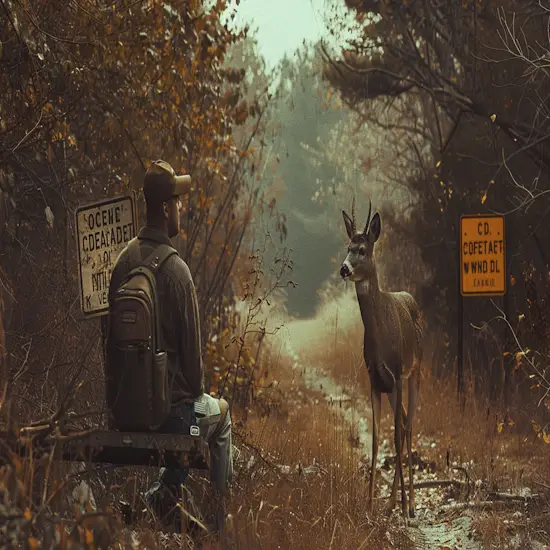
Chronic Wasting Disease (CWD)
You should be aware of the DSA Rules regarding this disease. Understanding these rules is essential for maintaining the health of Ohio’s deer population.
DSA Rules
Regularly check the Ohio Department of Natural Resources website for updated information on DSA Rules regarding Chronic Wasting Disease (CWD) to guarantee compliance with regulations.
When hunting, it’s important to follow these guidelines to help prevent the spread of CWD:
- Know the Rules: Familiarize yourself with the DSA Rules in place for deer hunting to make sure you’re aware of any specific regulations related to Chronic Wasting Disease.
- Properly Dispose of Carcasses: Dispose of deer carcasses properly to prevent the spread of CWD. Follow the guidelines provided by the Ohio Department of Natural Resources for safe disposal methods.
- Report Suspected Cases: If you come across a deer that appears to be sick or showing symptoms of CWD, report it to the appropriate authorities. Early detection can help in monitoring and controlling the disease within the deer population.

Disease Surveillance Area (DSA)
Now, let’s talk about Disease Surveillance Areas (DSA) in Hardin County, Wyandot County, and Marion County. These areas play an essential role in monitoring and managing the health of deer populations.
Make sure to stay informed about any specific regulations or guidelines that apply within these designated zones.
Hardin County
In Hardin County, hunters should be mindful of the Disease Surveillance Area (DSA) regulations. It’s important to stay informed about the specific rules and guidelines in place to help manage and monitor diseases in the deer population.
Here are some key points to keep in mind:
- DSA Boundaries: Familiarize yourself with the exact boundaries of the Disease Surveillance Area in Hardin County to make sure you’re hunting within the designated area.
- Carcass Movement Restrictions: Be aware of any restrictions on moving deer carcasses within or outside the Disease Surveillance Area to prevent the spread of diseases.
- Reporting Requirements: Understand the reporting requirements for harvested deer within the DSA, including mandatory testing for certain diseases. Compliance with these regulations is vital for the health of the deer population and overall wildlife management efforts in Hardin County.
Wyandot County
Familiarize yourself with the Disease Surveillance Area (DSA) regulations in Wyandot County to guarantee compliance and contribute to the effective management of diseases in the deer population. In Wyandot County, specific rules apply to the transportation and testing of deer harvested within the DSA. To help monitor and control diseases like Chronic Wasting Disease (CWD), it’s vital to follow these guidelines diligently.
When hunting deer in the Wyandot County DSA, remember that all harvested deer must be presented for sampling within 24 hours of harvest. This sampling is essential for disease testing purposes.
Additionally, there are restrictions on the movement of deer carcasses and parts out of the DSA to prevent the spread of any potential diseases.
Marion County
To ensure compliance with Disease Surveillance Area (DSA) regulations in Marion County, adhere to specific rules for the transportation and testing of deer harvested within the area. When hunting in Marion County, it’s essential to follow these guidelines to help monitor and prevent the spread of diseases among deer populations:
- Deer harvested within the DSA must be taken to a designated carcass inspection and sampling station.
- Hunters are required to submit the head of the deer for testing within 24 hours of harvest.
- Transportation of high-risk carcass parts, such as the brain and spinal cord, outside the DSA is prohibited to minimize the risk of disease transmission.

Safety Regulations
Make sure to comply with all safety regulations while hunting in Ohio to guarantee a safe and enjoyable experience. Safety is paramount when participating in deer hunting season.
Always wear the required blaze orange clothing to ensure visibility to other hunters. It’s essential to handle firearms with care and always point them in a safe direction. Keep your finger off the trigger until you’re ready to shoot.
Additionally, be aware of your surroundings and never shoot at sound or movement. Before heading out, inform someone of your hunting plans and expected return time. Remember to carry essential safety gear such as a first aid kit, a flashlight, and a fully charged cell phone.
The Bottom Line
In Ohio, deer hunting season offers diverse opportunities for hunters to navigate bag limits, antler restrictions, and various hunting seasons throughout the year.
Remember to follow safety regulations, report your harvest, and be aware of Chronic Wasting Disease in Disease Surveillance Areas. By participating in deer hunting, you not only enjoy the sport but also contribute to wildlife conservation efforts.
If you are interested in hunting in Indiana, Michigan, Texas, and Wisconsin, you can read deer hunting Indiana, deer hunting season Michigan, deer hunting season Texas, deer hunting season Georgia, and deer hunting season Wisconsin.